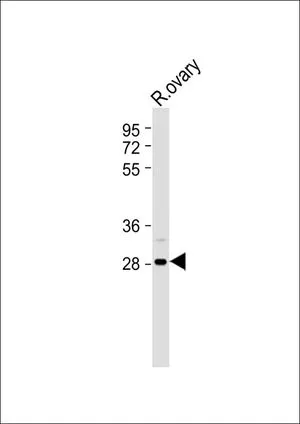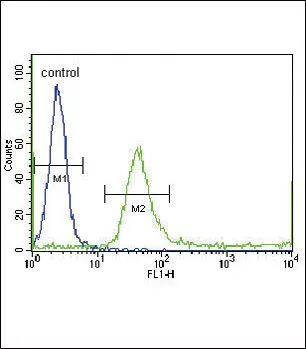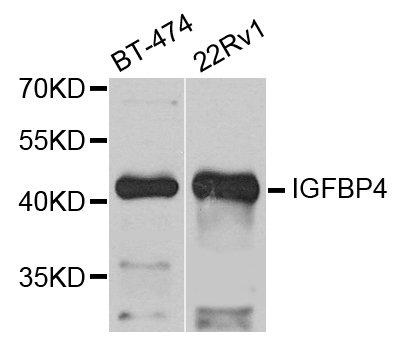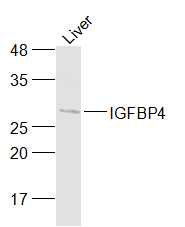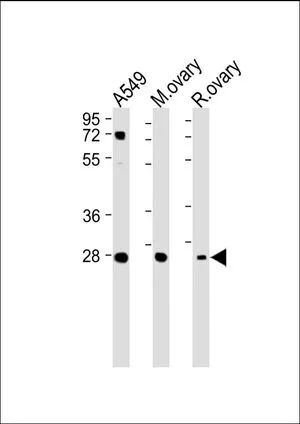
WB analysis of various samples using GTX81639 IGFBP4 antibody, N-term. Lane 1: A549 whole cell lysate Lane 2: Mouse ovary lysate Lane 3: Rat ovary lysate Loading : 20 microg per lane Dilution : 1:2000
IGFBP4 antibody, N-term
GTX81639
ApplicationsFlow Cytometry, Western Blot
Product group Antibodies
TargetIGFBP4
Overview
- SupplierGeneTex
- Product NameIGFBP4 antibody, N-term
- Delivery Days Customer9
- Application Supplier NoteWB: 1:2000. FACS: 1:10-1:50. *Optimal dilutions/concentrations should be determined by the researcher.Not tested in other applications.
- ApplicationsFlow Cytometry, Western Blot
- CertificationResearch Use Only
- ClonalityPolyclonal
- ConjugateUnconjugated
- Gene ID3487
- Target nameIGFBP4
- Target descriptioninsulin like growth factor binding protein 4
- Target synonymsBP-4, HT29-IGFBP, IBP4, IGFBP-4, insulin-like growth factor-binding protein 4, IBP-4, IGF-binding protein 4
- HostRabbit
- IsotypeIgG
- Protein IDP22692
- Protein NameInsulin-like growth factor-binding protein 4
- Scientific DescriptionThis gene is a member of the insulin-like growth factor binding protein (IGFBP) family and encodes a protein with an IGFBP domain and a thyroglobulin type-I domain. The protein binds both insulin-like growth factors (IGFs) I and II and circulates in the plasma in both glycosylated and non-glycosylated forms. Binding of this protein prolongs the half-life of the IGFs and alters their interaction with cell surface receptors. [provided by RefSeq, Jul 2008]
- Storage Instruction-20°C or -80°C,2°C to 8°C
- UNSPSC12352203

